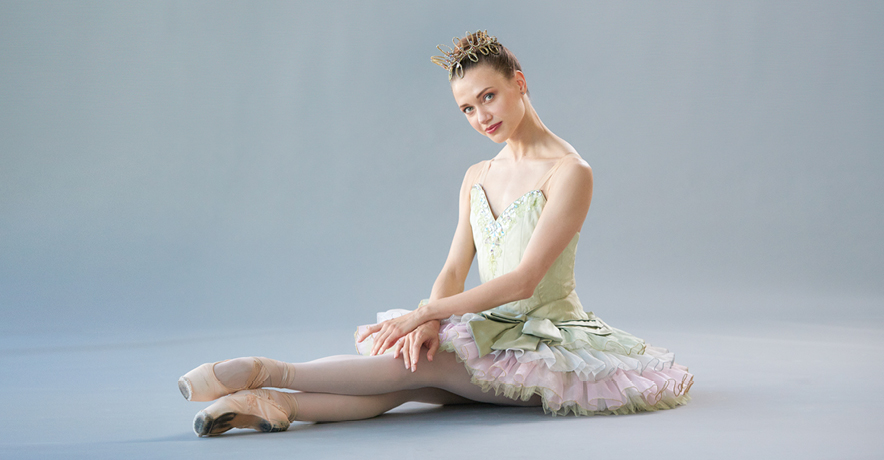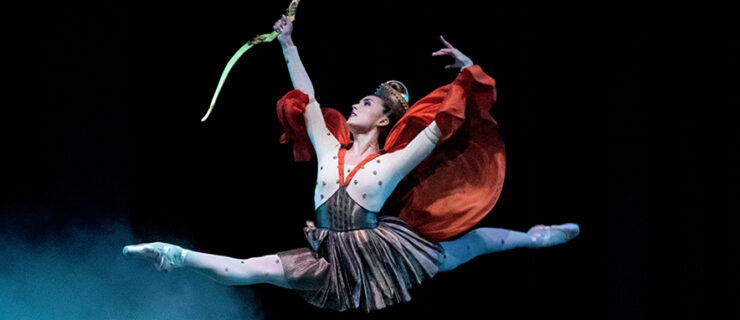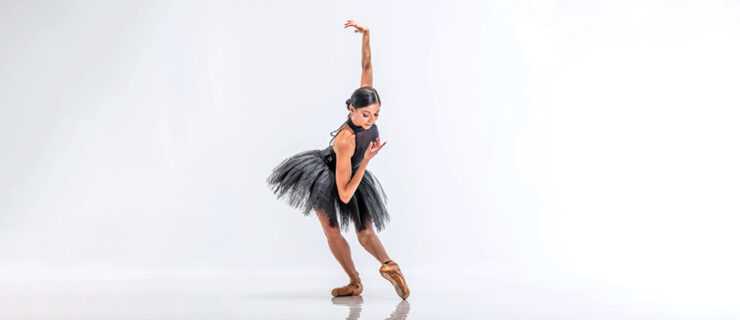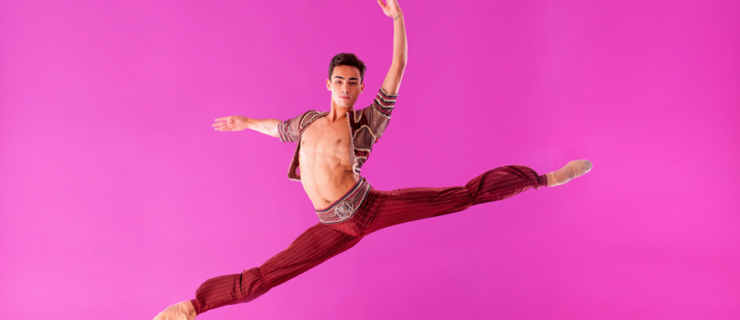Yuliia Moskalenko: The Luminous Ukrainian Ballerina Finds Refuge at Miami City Ballet
When thinking about conditions in her beleaguered homeland, just days after arriving in Miami in late July, Ukrainian ballerina Yuliia Moskalenko looks out of an office window at Miami City Ballet and draws a deep breath.
“Nobody is safe in Ukraine,” she says, referencing the family and friends she’s left behind. Her gray-tinged blue eyes seem to scan the latitudes she’s traveled, and her sigh reveals the burden of current events.
Still, the Kyiv native and former dancer at the National Ballet and Opera of Ukraine has found hope at Miami City Ballet. Recently hired as a principal, she considers this a miraculous turn of fate. As she takes class or goes to a fitting, the bright studios at her new artistic haven on South Beach—and the promise they hold—help bring light into the ballerina’s life.
Since Russian forces invaded Ukraine on February 24, the number of people fleeing the war has surpassed 7 million. Dance artists, students and teachers have dispersed, mostly throughout Europe, looking not only for safety but to continue in the art form that has enriched their nation for centuries.
“My friends are now in different financial and emotional states,” says Moskalenko. “Some stayed in Kyiv, but most evacuated. We keep in touch and support each other. No matter their situation, everyone makes donations for Ukrainians who are worse off, injured or fighting in the military.”
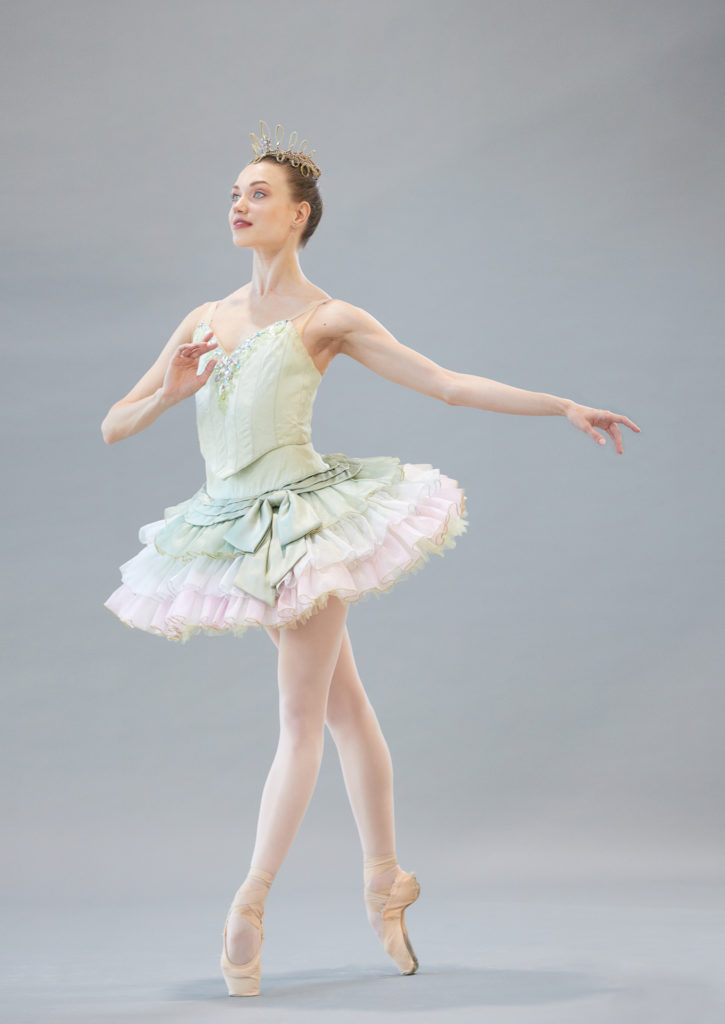
Though facing unfamiliar repertoire, a new language, and the foreign pulse of a subtropical city, Moskalenko is grateful to be at MCB. Still, this 29-year-old carries a great deal of history in opposite parts of her heart: one for all the blissful moments before the war, another for the horrors after.
A Life Left Behind
A 2011 graduate of Kyiv Choreographic College, Moskalenko knew from an early age that ballet was her destiny, starting lessons at 9 at the urging of a gymnastics teacher. “Soon I realized I liked dance a lot more than sports,” she says, adding that she had been taking Ukrainian folk dance classes since age 8 to complement her rhythmic-gymnastics training.
Some of Moskalenko’s best lessons came after joining the National Ballet of Ukraine at 18, rising from ensemble to lead roles in classical standards. She relates, sometimes with the help of an interpreter, how company ballet master Raisa Khilko mentored her.
“She helped me with body alignment, how to build a movement, a pose. But the most important thing I learned was how to become a character. You have to enjoy being Juliet, Kitri, Aurora, giving all your emotion and energy to the audience.”
Moskalenko loves the transformations of ballet protagonists. About Giselle, she admits “going from village girl to Wili is a test. But it’s fascinating to start out playful and innocent and then go on to the mad scene, careful not to underplay or overdo it.” In the case of Aurora, she says, “it’s all about technical skill for gradations. The audience has to feel they’re witnessing the beginning of spring.” She’s done her fair share of contemporary work, too, cast early in her career as the title character in Edward Clug’s quirky Radio & Juliet, which is set to Radiohead songs.
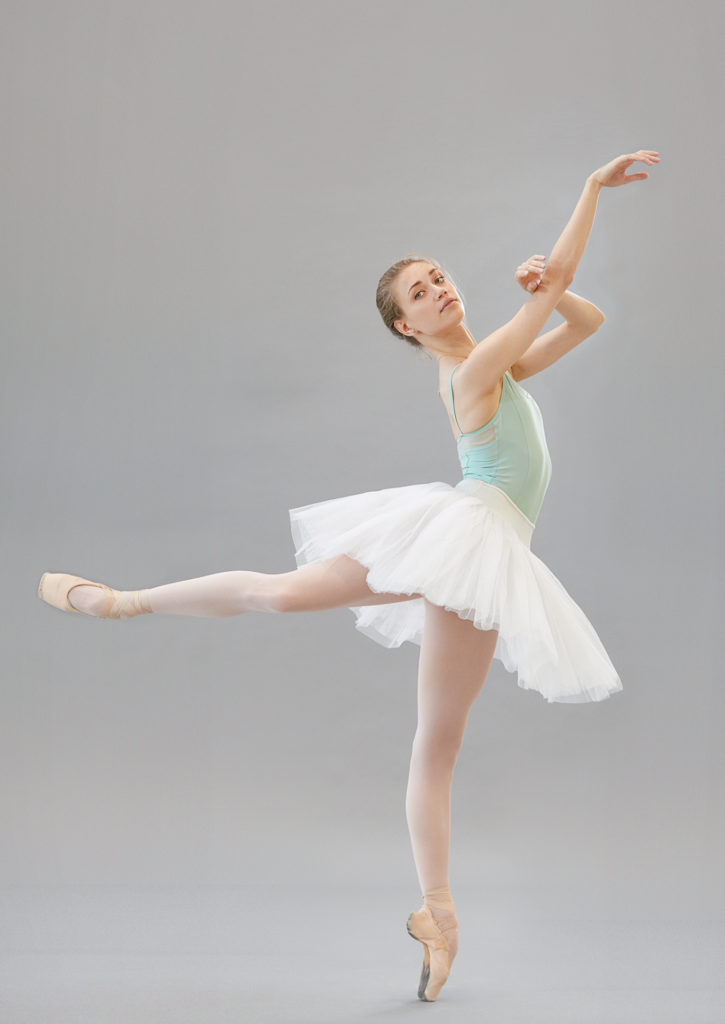
As a National Ballet of Ukraine principal, Moskalenko kept a busy schedule. After yoga and meditation at home, she’d walk her dog and then make the short trek through central Kyiv to the theater, where she’d rehearse several roles a day—they could all come up within the month. She’d stay late if on a reserve cast that evening. She relaxed at home, absorbed in a good book or sharing quality time with her fiancé, Hennadii Petrovskyi, now a former National Ballet of Ukraine dancer.
On weekends they’d often ride bicycles to Trukhaniv Island, in the middle of the Dnipro River, which divides Kyiv. “The island is beautiful with its pine forest, and nature inspires me” she says. “On summer nights, when the sky was clear, I loved just to sit and look at the stars.”
It was those cherished skies and landscapes that Russian aggression endangered. At 5 am on the day of the invasion, a call from Moskalenko’s sister startled her awake with the awful news. She still struggles to describe her fear in words.
“Can you imagine?” she says. “One day you go to bed in your comfortable apartment, in the city you love, with all kinds of plans, and the next morning you realize everything around you might collapse at any second.”
With ballet at a halt, safety, especially for her loved ones, became her primary concern. The family fled Kyiv, driving first to a village near Bucha and later to Lviv, a city near the Polish border, their trip measured in terror as much as in protracted kilometers.
“It was very scary along the highway, especially when we stood in a traffic jam for refueling,” Moskalenko says. “We were such an easy target!”
Even in the relative sanctuary of Lviv, her country’s ongoing misery would bring Moskalenko to tears. But help soon came from abroad.
Making Connections
Ukrainian ballerina Katja Khaniukova, a first soloist at English National Ballet who had previously danced with Moskalenko in Kyiv, sent her colleague’s resumé to former New York Times dance critic Alastair Macaulay, a champion on social media of displaced Ukrainian artists. Seeing his posts, Miami City Ballet artistic director Lourdes Lopez called Macaulay for help identifying possible Ukrainian candidates for openings in her company. She says he then passed her Moskalenko’s information.
“Like everyone else, I was trying to figure out how to help Ukrainians,” says Lopez. “Because of my parents, this situation really struck a chord.”
Born in Cuba and having emigrated to Miami with her family as a toddler, Lopez knows first-hand the ache and yearnings of political exiles. This became a catalyst for her pro-Ukraine action. “One person can’t do everything,” she emphasizes, “but everyone can do something. And this has to be both urgent and long-term.”
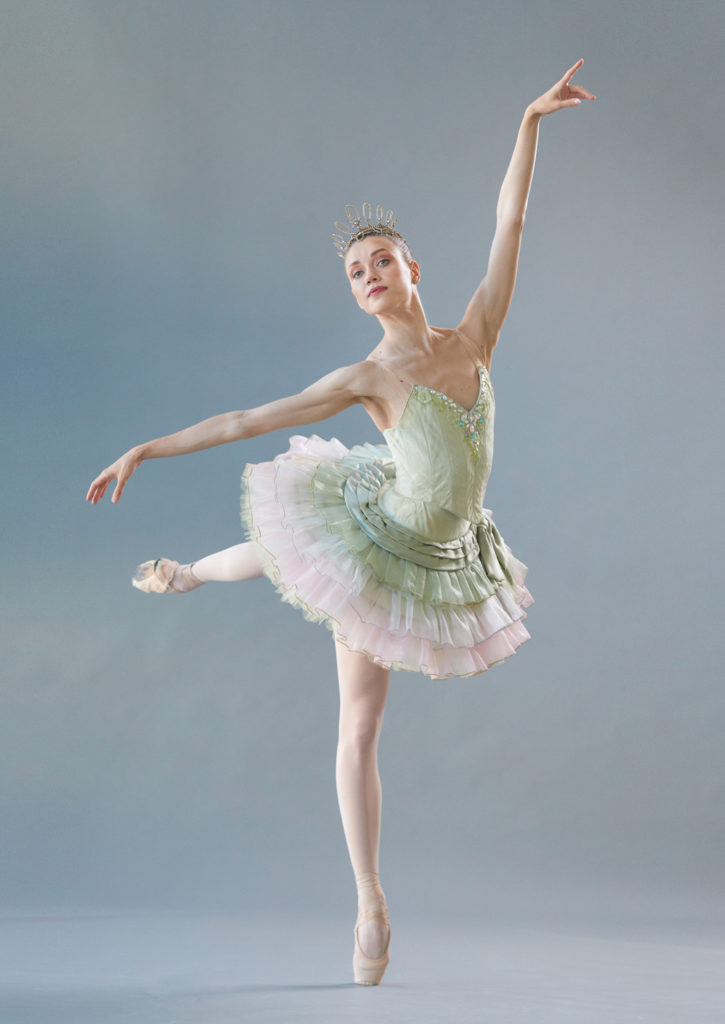
In mid-March, the director sent an introductory email to Moskalenko and set up a three-way phone call to Lviv, relying on a friend of her husband’s for interpreting.
“Between air-raid alarms, we had to cut off, and I ran to a safe place,” says Moskalenko. Lopez managed to convey details of employment but confesses feeling awkward—given the circumstances—at having to ask Moskalenko for videos of her dancing.
Yet those videos clinched her decision. Already convinced of Moskalenko’s intelligence and appetite for ballet, Lopez saw “how musical she was—lyrical, with her long, beautiful lines.” She offered her a contract.
Moskalenko could now envisage a future “to go on in what I was born to do and have dedicated my life to.” Her journey west proved daunting, but, the ballerina stresses, “I met very kind people along the way.”
The Long Road to Miami
At the end of March she arrived in Germany, where her fiancé’s mother works at the John Cranko School, and focused on getting back into shape. Moskalenko then moved to the Netherlands for three months, where she was invited to perform with The United Ukrainian Ballet, a charitable coalition of displaced dancers from Ukraine and their artistic allies, under Igone de Jongh’s direction.
All the while, Lopez admits, “the visa process was a nightmare.”
Through the Ford Foundation, where she’s a trustee, Lopez struck a path forward. Dance enthusiast and immigration-law expert Gwendolyn Robosson, of the firm Fragomen, took on Moskalenko’s case pro bono. And documents in support of Moskalenko came in from bipartisan Florida legislators and dance-world figures, choreographer Alexei Ratmansky included. In June, with a three-year MCB contract in hand, Moskalenko was granted an O-1 work visa for individuals of extraordinary ability.
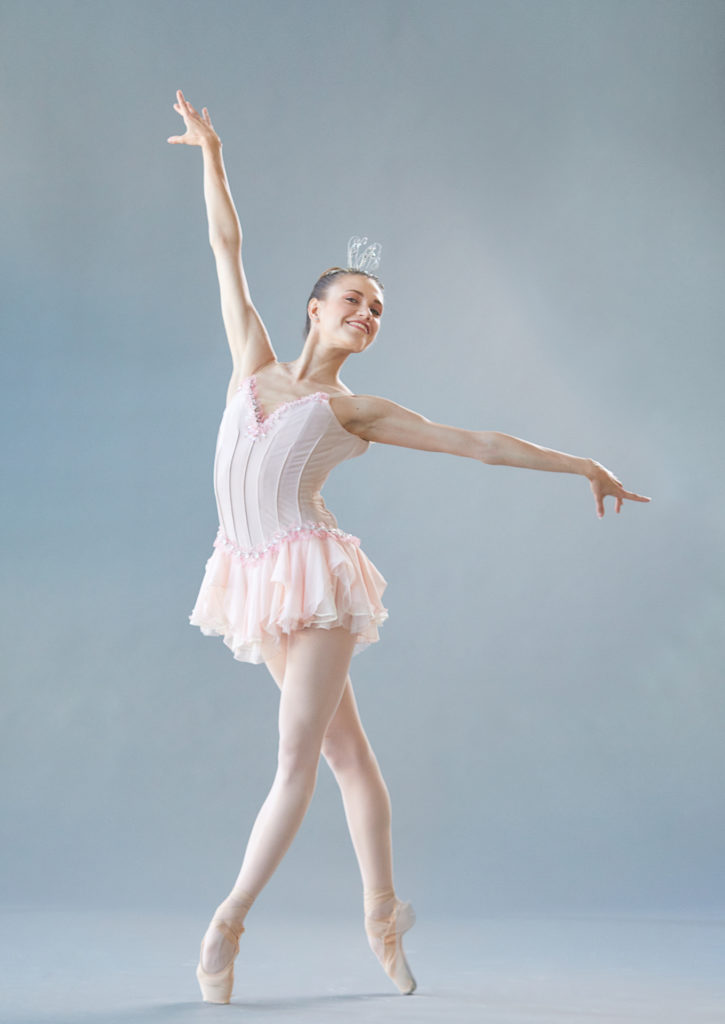
In late July, Lopez and her husband traveled to England to watch Moskalenko perform as a special guest with the Covent Garden Dance Company—and to finally meet her in person. “It was an incredibly emotional moment,” says the ballerina. “It felt like we’d known each other for a long time.”
A few days later the couple escorted Moskalenko to Miami, where’s she’s now settling in. About her new city, the ballerina says “I am attracted to the ocean’s beauty. Near it my soul rests, and I feel calm.” That’s become especially important, since a recently sustained injury has delayed her debut with the company. Yet Moskalenko is eager, she says, to “blend organically into the new team.”
For that, she can rely on fellow principal Jennifer Lauren, who’ll help guide her as part of MCB’s buddy system for new dancers. And Moskalenko feels solidarity from this troupe that, in May, put on To Ukraine, With Love, a benefit for the war-torn country organized by principal Tricia Albertson.
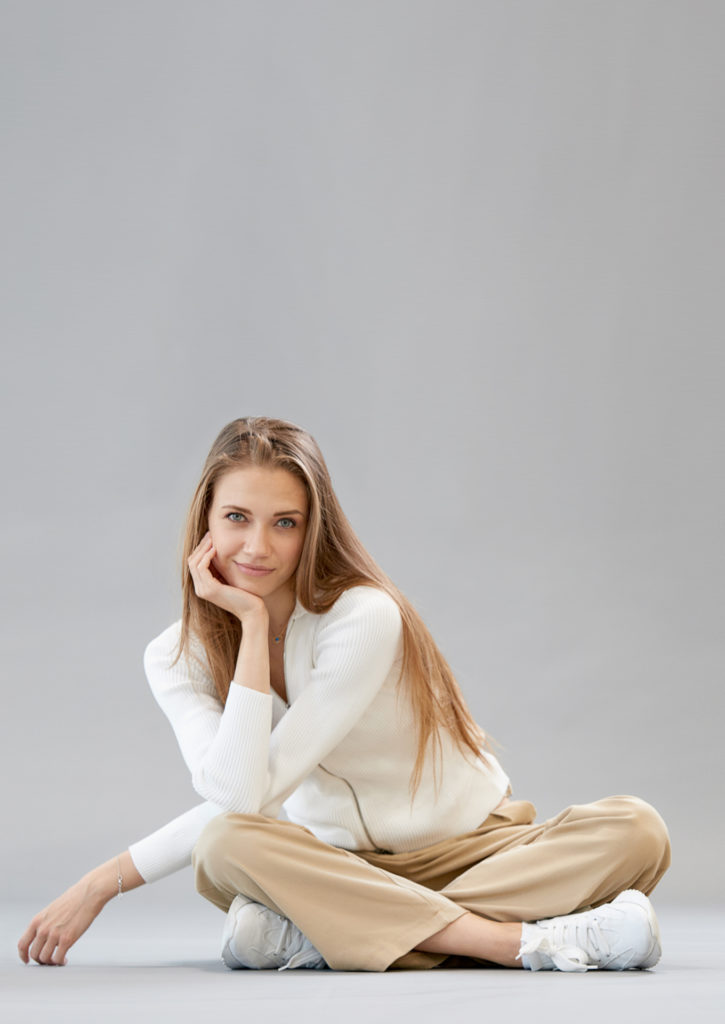
“My special aspiration,” says Moskalenko, “is to dance Balanchine, something I’ve always dreamed of. This will be one of my biggest challenges, since the choreography goes so fast as you become the embodiment of music.”
Could Symphony in C or Square Dance lie in store for her this spring? Stay tuned. Meanwhile, though missing her family, Moskalenko knows they’re happy for her. Most of all, she wants her story to inspire young Ukrainian dancers: “To show by example that so much is possible.”
